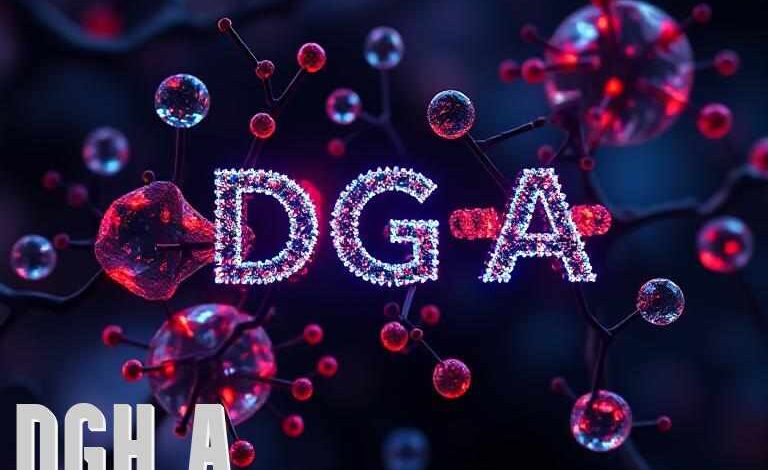“dgh a”: Everything You Need to Know in 2025

In the ever-evolving landscape of digital trends, new terms and abbreviations constantly emerge, capturing the attention of enthusiasts and professionals alike. One such term gaining traction recently is “dgh a.” At first glance, it might seem obscure or technical, but beneath its simple facade lies a fascinating concept that intersects technology, culture, and innovation. Whether you’re a curious newcomer or a seasoned expert, understanding what “dgh a” entails can open doors to new insights and opportunities.
In this comprehensive guide, we’ll explore the ins and outs of “dgh a,” its origins, practical applications, and why it matters in 2025. By the end, you’ll have a clear grasp of this intriguing term and how it fits into the broader digital ecosystem.
What Is “dgh a”? Breaking Down the Basics
Before diving into complexities, let’s start with the fundamentals. “dgh a” is a term that has surfaced predominantly within online communities, tech forums, and industry discussions. While it may not be a household phrase yet, its significance is growing, particularly among those tracking digital innovation.
“dgh a” is essentially an abbreviation or shorthand that encapsulates a specific concept related to data handling, user interaction, or digital transformation. Its precise meaning can vary depending on context, but generally, it revolves around the idea of enhanced digital connectivity and adaptive systems.
For example, some tech evangelists associate “dgh a” with dynamic growth harnessing algorithms, emphasizing adaptive learning systems that evolve based on user behavior. Others interpret it as digital governance and hybrid automation, focusing on how organizations manage digital assets securely while leveraging automation.
Origins and Evolution
The term “dgh a” has roots in early 2020s tech jargon, initially appearing in niche forums discussing AI-driven systems and digital security protocols. Over time, as digital ecosystems grew more sophisticated, “dgh a” became a catchphrase representing the shift toward more integrated, intelligent digital architectures.
In recent years, researchers and industry leaders have adopted “dgh a” as shorthand for Digital Growth and Hyperautomation Architecture, reflecting the convergence of growth strategies and automation techniques powered by AI and machine learning.
Why “dgh a” Matters in 2025
Understanding “dgh a” isn’t just about decoding a cryptic acronym; it’s about recognizing a paradigm shift in how digital systems operate. In 2025, businesses, governments, and individuals are navigating an increasingly interconnected world where agility, security, and personalization are paramount.
1. Driving Digital Transformation
“dgh a” embodies the core principles behind digital transformation strategies. Companies leveraging “dgha” frameworks can adapt faster to market changes, seamlessly integrate new technologies, and deliver personalized experiences. For instance, retail giants use adaptive algorithms (a component of “dgha”) to tailor product recommendations, boosting sales and customer satisfaction.
2. Enhancing Security and Privacy
With cyber threats escalating, “dgh a” also signifies a focus on secure digital governance. This includes implementing intelligent security protocols that adapt based on threat intelligence and user behavior, making data breaches less likely.
3. Fostering Innovation and Competitive Edge
Organizations embracing “dgh a” are often at the forefront of innovation. Whether it’s deploying hyper-automated workflows or leveraging AI for predictive analytics, the concept promotes a proactive rather than reactive approach to business challenges.
Deep Dive into “dgh a” Components
To truly grasp “dgh a,” it’s essential to understand its core components. Think of it as a layered architecture combining multiple technological and strategic elements to create a robust digital ecosystem.
1. Data-Driven Growth
At its heart, “dgh a” relies on harnessing data effectively. This involves collecting, analyzing, and acting upon vast amounts of information in real-time. Companies use advanced analytics and machine learning to predict trends, personalize offerings, and optimize operations.
Key aspects include:
- Big Data Integration
- Real-Time Analytics
- Predictive Modeling
2. Hybrid Automation
Automation isn’t just about replacing manual tasks but creating smart, adaptable workflows. “dgh a” emphasizes hybrid models combining human oversight with AI-driven processes, ensuring flexibility and accuracy.
Examples:
- Automated customer service chats complemented by human agents
- Intelligent supply chain management systems adjusting to demand fluctuations
3. Secure Digital Governance
In the age of data privacy regulations like GDPR and CCPA, “dgh a” underscores the importance of secure, compliant digital governance. This involves deploying AI-powered security protocols that continually learn and adapt.
Features include:
- Automated compliance checks
- Threat detection and response
- Identity verification systems
Practical Applications of “dgh a” in 2025
As “dgh a” continues to influence various sectors, its practical applications are becoming more diverse and impactful. Here are some notable examples:
| Sector | Application | Benefits |
|---|---|---|
| Healthcare | AI-powered diagnostics and personalized treatment plans | Increased accuracy, faster diagnoses, tailored patient care |
| Finance | Automated fraud detection and risk assessment | Reduced fraud, improved compliance, better risk management |
| Retail | Dynamic pricing and personalized marketing | Higher conversions, improved customer engagement |
| Manufacturing | Predictive maintenance and smart factories | Reduced downtime, cost savings, increased efficiency |
Case Study: Retail Industry
A leading global retailer integrated “dgh a” principles into its operations by deploying AI-driven inventory management and customer insights platforms. The result was a 20% increase in sales, a 15% reduction in stockouts, and a significant boost in customer loyalty. Their secret? Using data analytics to anticipate customer needs and automate supply chain responses swiftly.
Challenges and Limitations of “dgh a”
While “dgh a” presents numerous opportunities, it’s important to recognize some hurdles.
1. Data Privacy Concerns
As reliance on data intensifies, so do privacy issues. Companies must balance innovation with compliance, ensuring user data is protected without sacrificing personalization.
2. Implementation Complexity
Building an effective “dgh a” ecosystem requires substantial investment in technology, talent, and infrastructure. Small and medium-sized enterprises may find it challenging to adopt without strategic planning.
3. Ethical Considerations
AI-driven systems can inadvertently reinforce biases or make opaque decisions. Ethical oversight is vital to maintaining trust and fairness.
The Future of “dgh a”: What’s Next?
Looking ahead to 2025 and beyond, “dgh a” is poised to become a foundational element of digital ecosystems. As AI, IoT, and edge computing evolve, their integration under “dgha” principles will lead to more autonomous, resilient, and user-centric systems.
Key trends to watch include:
- Decentralized Data Architectures: Moving away from centralized models to enhance security and resilience.
- Zero Trust Security Models: Implementing adaptive security protocols that continuously verify user identities.
- Enhanced Human-AI Collaboration: Combining human intuition with AI precision for superior decision-making.
Final Thoughts: Why You Should Pay Attention to “dgh a”
Understanding “dgha” isn’t just about keeping up with jargon—it’s about recognizing the digital shifts shaping our world. Whether you’re a business leader, tech enthusiast, or casual observer, embracing the concepts behind “dgha” can provide a competitive edge and foster innovation.
The key takeaway? In 2025, the most successful organizations will be those that master the art of integrating data, automation, and security under a cohesive “dgha” framework. Staying informed and adaptable will be your best tools in navigating this exciting digital frontier.
FAQs: Curious About “dgh a”? Here Are Some Quick Answers
Q1: Is “dgh a” a real technical term or just a buzzword?
It’s a real concept evolving within digital transformation circles, representing integrated strategies around data, automation, and governance.
Q2: Do I need to be a tech expert to understand “dgh a”?
Not necessarily. The core ideas are accessible—it’s about understanding how data and automation are transforming systems, which is relevant across industries.
Q3: How can small businesses leverage “dgh a”?
Start simple by adopting cloud-based analytics tools, automating repetitive tasks, and focusing on data security. Gradually expand your digital capabilities.
Q4: Will “dgh a” replace existing digital strategies?
No, it’s more about evolution. “dgha” complements and enhances current approaches, leading to smarter, more adaptable systems.
Q5: What’s the best way to stay updated on “dgh a” developments?
Follow industry leaders, join relevant forums, and subscribe to reputable tech news sources that focus on digital innovation.
In summary, “dgh a” is emerging as a pivotal concept shaping the future of digital systems. By understanding its components and implications, you’re better equipped to adapt, innovate, and thrive in the rapidly changing digital landscape of 2025.



